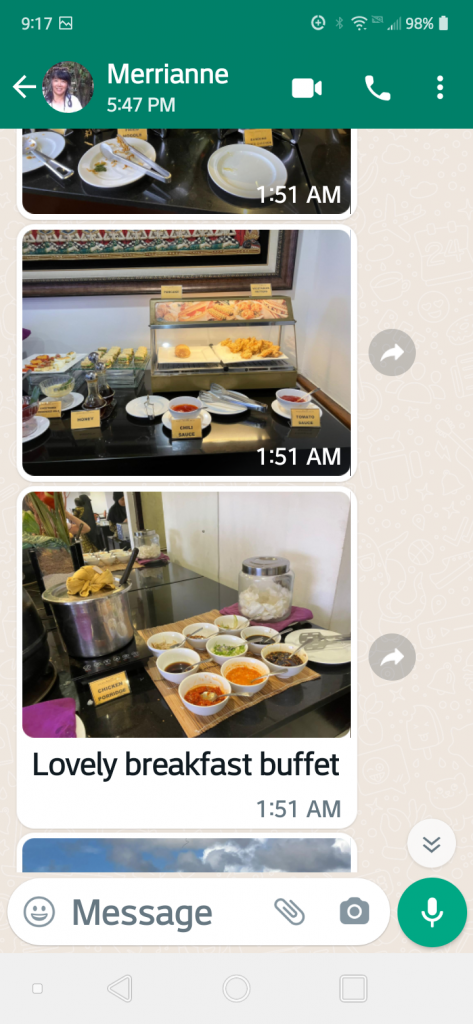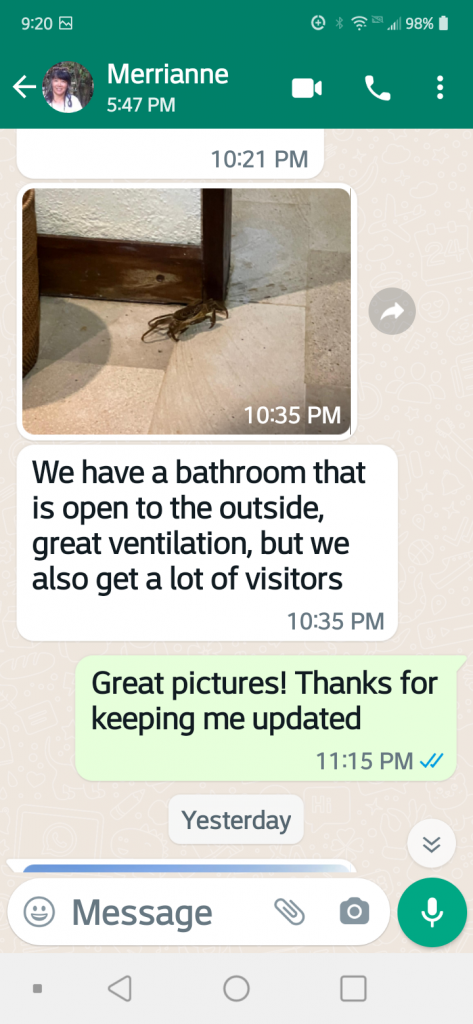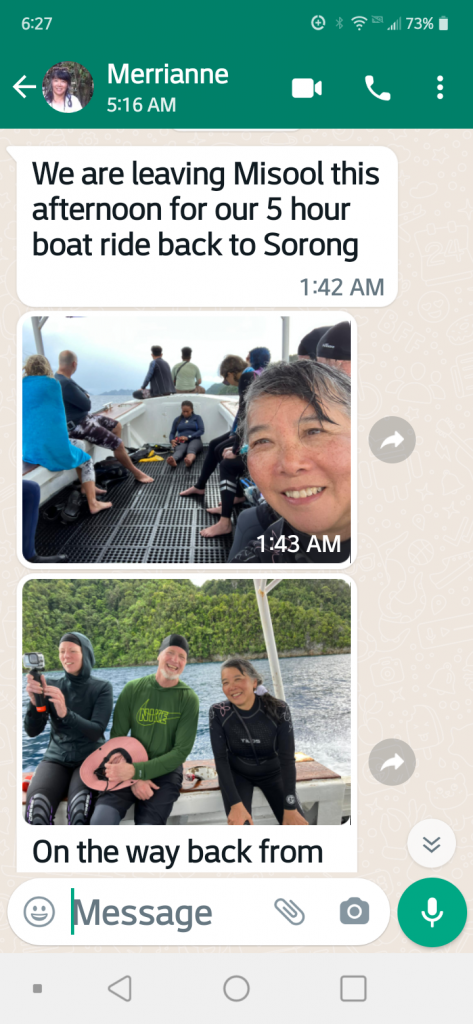This is a repository for the Whatsapp messages she sent me.
I (Roderick) got back on Wednesday night, March 1st. Here is an excerpt from my journal:
Quite an adventure catching the plane back to Honolulu for the connecting flight to San Jose. I had planned the night before, allowing for driving time, filling gas for the rental car, even a little shopping at Costco. Unfortunately, I didn’t account for stupidity. I drove out of the cabin at 8:07 am, a little late, but I had put margin into my schedule. On the way, I decided to visit the cell towers to take a picture, which burned more time. I got to Costco at almost 10 am, without incident, and there was almost no line for gas. I went into the store to look around, which was a mistake. I left Costco at 10:30, and went straight to Budget rent-a-car. Thank goodness for built-in GPS in the car. I was directed by someone outside to pull my car into a marked lane. I then went to the tent outside, but no one was there, so I went into the building to process my paperwork. There were about 5 people in front of me. By the time I got to the counter, it was 10:45, and they told me that I didn’t need to do anything. Wasted that time. Then I had to wait for the shuttle to the terminal, which came within 5 minutes, but it was distressing not knowing how soon it would come. I went to the agriculture inspection, but realized that it was only for checked luggage, of which I had none. So I stood in the TSA line, which went SUPER slow, even though there weren’t many people in it. It seemed like there was just a single x-ray machine, and they were looking at each bag carefully. Before my turn came, I saw a sign that said not to pour water on the ground or in the trash can. I realized that I had not drunk my 1 liter on the drive up. I quaffed it on the spot. It was about 11:25 when my bags cleared TSA, and I slipped my shoes and belt on, but didn’t even bother to tie my shoes. Where to go? There was no monitor showing the status of flights. Gates 1-6 were on one side of the airport, and the other gates were in the opposite direction. I chose to run to gates 1-6, and as soon as I saw someone there that looked official, I asked if the Hawaiian flight to Honolulu was there. No, wrong side! I ran across the airport to the other gates, at least, shuffled quickly with my untied shoes. At that side, I didn’t see a status monitor, either, so I asked a human, who said I was probably at gate 9. As I was going over to gate 9, I heard 3 people being paged for the flight, and the last one was passenger Roderick Young. They were about to close the cabin door. There was no one in line for boarding; everyone was already on the plane. I fumbled with the boarding pass on my phone, and twice, it went back to the gallery instead of the individual picture. “Sorry, I’m out of breath,” I apologized. The attendant said to relax, I was fine, now. I was the absolute last person on the plane. There were two other people in my row, and I took the aisle seat. Thank goodness for that air jet that blows onto the seat. Turns out that the people next to me, Cameron and Kate, were the 2nd to the last on the plane. I found out later that they had ridden their bikes from Hilo over the northern half of the island, to Kona, staying at AirBnb’s.
I got into HNL early (turns out the plane had actually taken off early), and had almost 2 hours before my connecting flight to SJC. I didn’t have to go through TSA again, but just for the record, HNL TSA is very fast and efficient compared to Kona. On the earlier flight to KOA, TSA took only about 10 minutes, including the line. I was glad to be on schedule, and bought a grilled mahi bowl to celebrate. It was delicious, but at one point, a dry piece of mahi got stuck in my esophagus. I could breathe fine, but had hiccups. Water wouldn’t wash it down. Another passenger told me that I should go to the bathroom and just force myself to throw up, which I did. I didn’t even have to gag, I just pushed the water and food out into the sink. I rinsed what I could down the sink, then got a paper towel and picked up the remainder to throw in the trash. I felt so much better.
The flight back was really full. They weren’t allowing people to cheat on their baggage count by carrying shopping bags. 2 pieces per person only, and a purse counts as 1. Fortunately, I had only a half full bag, and half full day pack. Could have put everything into my day pack if need be. But they were pulling people out of the boarding line and telling them that they must consolidate their luggage. The overhead bins were packed on the flight, and there was considerable shuffling and searching for space before we could finally take off.





















